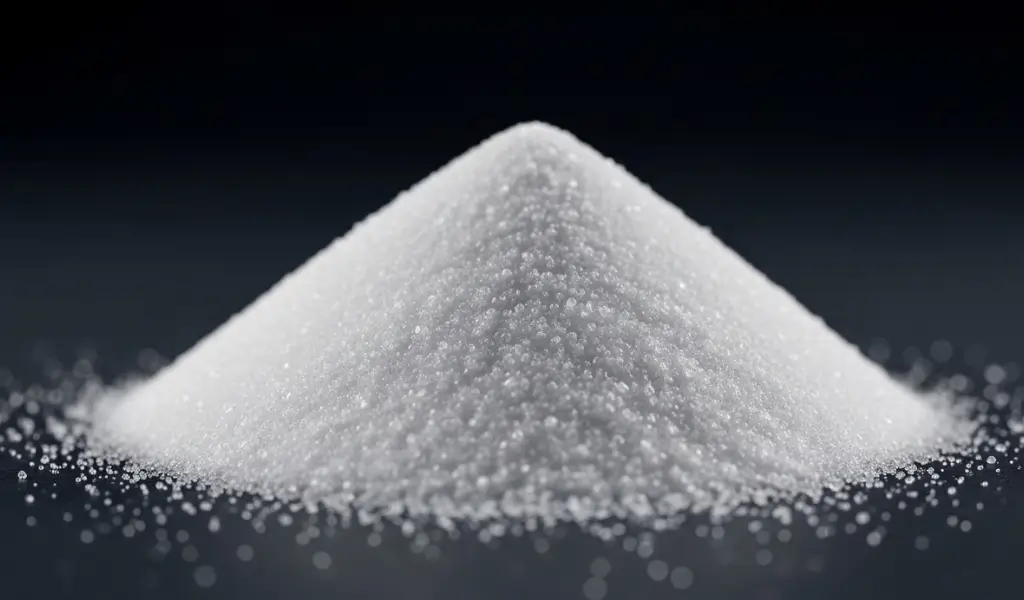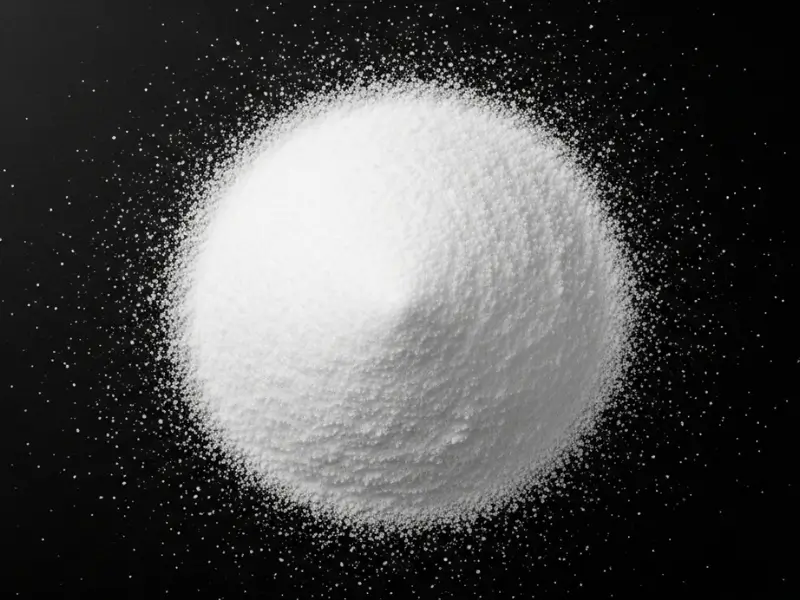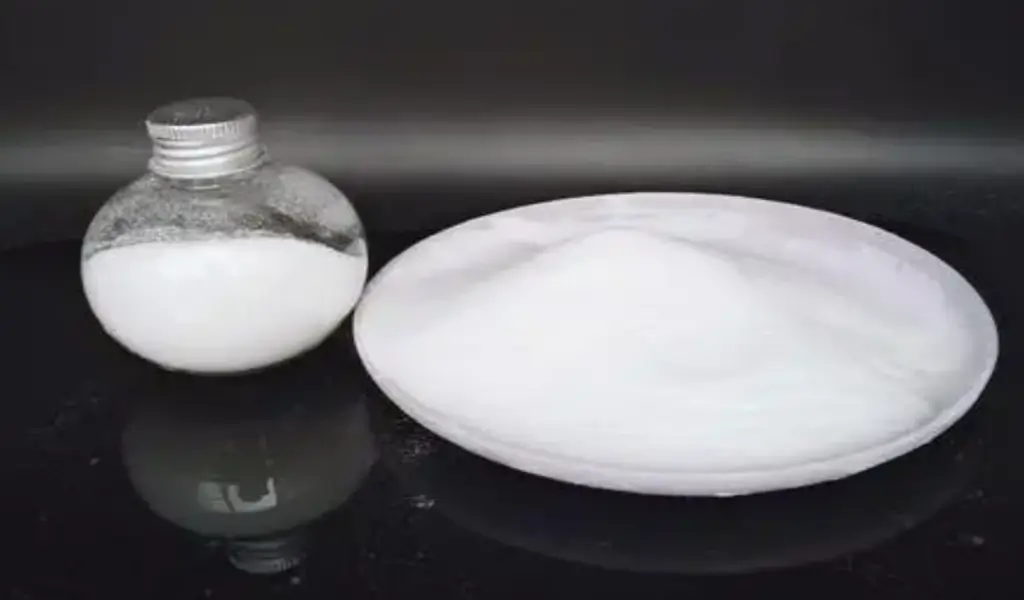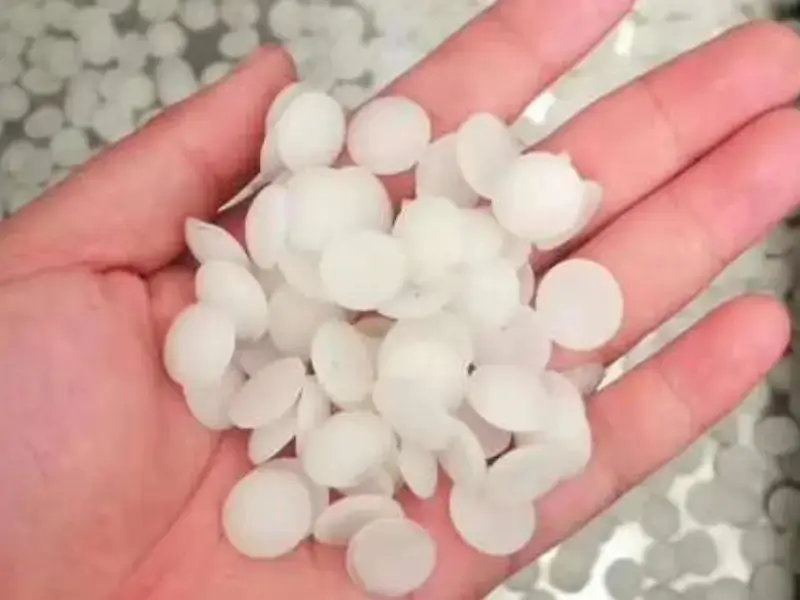CPE is a saturated polymer with better heat and weather resistance, while CM is semi-crystalline with higher crystallinity and better oil resistance.The key difference between CPE and CM rubber lies in their base polymers and typical applications: CPE is chlorinated polyethylene, offering excellent flexibility, weather resistance, and impact strength—ideal for cable sheathing and rubber parts. In contrast, CM rubber is a chlorinated rubber mainly used in coatings, known for its fast drying, strong adhesion, and chemical resistance. Simply put, CPE is used as a rubber material, while CM is mostly used in protective paints.
1. Introduction to CPE and CM
To fully grasp what differentiates CPE from CM, it’s essential to start with definitions. CPE, or Chlorinated Polyethylene, is a synthetic polymer characterized by enhanced characteristics due to chlorination of polyethylene. This process significantly improves its chemical resistance and adaptability in various industrial applications. On the other hand, CM, encompassing a broader range of material types, represents any materials that have been chlorinated to varying degrees for specialized applications.
The significance of understanding these distinctions cannot be overstated. As the demand for materials that can withstand extreme conditions escalates, companies need clarity on which materials to select based on their project needs. But here’s the kicker—merely knowing the names isn’t enough; you need to understand their properties and aptitudes relevant to your industry. Thus, we will dive deeper into their chemical structures and what makes each suitable for different uses.
| Property | CPE Features | CM Features |
|---|---|---|
| Material Type | Synthetic rubber | Varied types of chlorinated materials |
| Common Industries Used | Automotive, construction | Chemical processing, industrial applications |
| Key Characteristics | Flexibility, thermal stability | Chemical resistance, durability |
2. Chemical Composition
When it comes to chemical composition, CPE and CM exhibit unique structural elements that dictate their properties. CPE is derived from polyethylene, which undergoes chlorination, leading to improved performance metrics. The chlorination process replaces hydrogen atoms with chlorine atoms, effectively enhancing the material’s ability to withstand chemical aggression.
Conversely, CM can incorporate various chlorinated compounds, which means its composition can be more diverse. CM may refer to compounds modified with chlorinated additives or entirely synthesized polymers designed for specific characteristics. This versatility in CM allows it to cater to a wider range of applications.
What’s the real story? The implications of these compositions are profound. While CPE is renowned for its excellent flexibility and adaptability, CM’s broader variety means some formulations may excel in specific industrial environments. Therefore, understanding the subtleties of their chemical makeup can be crucial when determining the right choice for your project.
| Chemical Property | CPE | CM |
|---|---|---|
| Base Material | Polyethylene | Various chlorinated structures |
| Chlorination Process | Direct chlorination | Potentially multiple additives |
| Structural Flexibility | High through chlorination | Varies based on formulation |
3. Physical Properties
Physical properties play a pivotal role in application suitability for CPE and CM. CPE exhibits outstanding flexibility, which allows it to be easily molded into various forms without losing structural integrity. Additionally, its tensile strength is commendable, making it ideal for applications requiring durable materials, such as cables and hoses.
On the other hand, CM often showcases enhanced dimensional stability and superior durability. While CPE can endure specific temperature ranges, CM frequently retains its mechanical properties even under extreme conditions. This characteristic is particularly valuable for industries exposing materials to fluctuating temperatures, humidity, or harsh weather elements.
This is where it gets interesting—understanding how these physical attributes translate into real-world applications makes a significant difference. For example, if you require a material that will be subjected to outdoor conditions, CM might be more appropriate due to its resilience. However, if flexibility is paramount, CPE stands out.

| Physical Property | CPE Characteristics | CM Characteristics |
|---|---|---|
| Flexibility | High durability in flexible forms | Moderate flexibility |
| Tensile Strength | Very strong | Superior strength |
| Weather Resistance | Moderate | High |
4. Applications of CPE
Chlorinated Polyethylene (CPE) has established itself across various industries due to its flexibility and resilience. One major application is in automotive manufacturing, where parts such as brake hoses and cable insulations benefit significantly from CPE’s resistance to oils and temperature fluctuations. Another important use is in the construction sector; CPE’s ability to withstand weather conditions makes it suitable for roofing membranes and water-resistant coatings.
Moreover, CPE is increasingly used in wire and cable insulation, (see”What Is Chlorinated Polyethylene Used For?”),where it protects the wiring from moisture, chemicals, and abrasion. Its adaptability allows it to be molded into intricate shapes and designs, further broadening its application spectrum.
What about case studies? For instance, leading automotive companies have reported reduced failures in brake hoses made from CPE compared to traditional materials, showcasing its reliability in high-stress environments. As industries seek ways to enhance product longevity, CPE’s applications will likely grow.
| Application Area | CPE Usage | Benefits |
|---|---|---|
| Automotive | Brake hoses, cable insulations | Durability, heat resistance |
| Construction | Roofing membranes, water-resistant coatings | Weather resistance |
| Electrical Engineering | Cable insulation | Moisture protection |
5. Applications of CM
Chlorinated Material (CM) is versatile, serving diverse industries with specific requirements. In chemical manufacturing, CM functions as protective coatings that safeguard processes from exposure to aggressive substances. Its robustness makes it a preferred choice in settings where exposure to corrosive chemicals is frequent.
Moreover, CM is widely employed in the production of gaskets and seals, which need to withstand fluid aggression while maintaining effectiveness. Another notable application is in the oil and gas industry, where CM’s resilience to varying pressures and temperatures ensures safety and operational efficiency.
But here’s the kicker—CM’s adaptability means it can be formulated to meet specific environmental conditions, further enhancing its usability across sectors. Consequently, manufacturers often explore innovative formulations of CM that align with their unique operational demands to ensure optimal performance.
| Application Area | CM Usage | Benefits |
|---|---|---|
| Chemical Processing | Protective coatings | Corrosion resistance |
| Gaskets and Seals | Manufacturing of durable seals | Effective at high pressures |
| Oil and Gas Industry | Applications in drilling fluids | Resilience in extreme conditions |
6. Advantages of CPE
CPE boasts several advantages that make it a desirable material. One major benefit is its flexibility. Manufacturers value its ability to be easily shaped and molded into complex designs, assisting in the development of innovative products. Furthermore, CPE has shown exceptional thermal stability, enabling it to withstand a range of temperatures without losing key performance attributes.
Additionally, cost-effectiveness is a compelling aspect. Compared to other polymers with similar properties, CPE is relatively affordable, allowing businesses to maintain quality while keeping production costs low. This makes CPE an attractive option for companies looking to optimize their budget without compromising on material quality.
What’s more? CPE’s performance across diverse applications provides a competitive edge, as its properties can be tailored for specific needs through formulation adjustments. As such, it remains a staple in industries craving a balance of performance and affordability.
| Advantage | CPE Description | Impact on Usage |
|---|---|---|
| Flexibility | Easily molded into complex shapes | Essential for innovative designs |
| Thermal Stability | Withstands varying temperatures | Versatile for multiple applications |
| Cost-Effectiveness | More affordable than some alternatives | Attracts budget-conscious businesses |
7. Advantages of CM
Chlorinated Material (CM) comes with its own unique set of advantages that solidify its value in various industries. A standout feature is its superior chemical resistance, which allows it to be effectively used in harsh chemical environments without experiencing significant degradation. This characteristic makes CM a go-to choice for manufacturers in the chemical processing sector, as it protects against corrosive agents.
Another benefit of CM is its robustness, as it retains mechanical integrity under extreme pressures and temperatures. Businesses operating in sectors like oil and gas appreciate this factor since it contributes significantly to safety and operational efficiency.
This is where it gets interesting—CM’s adaptability to formulating changes offers businesses the opportunity to develop custom solutions tailored to specific regulatory needs and performance requirements, granting them a competitive edge in their respective industries. Investing in CM can lead to long-term advantages for firms operating in challenging environments.
| Advantage | CM Description | Impact on Usage |
|---|---|---|
| Chemical Resistance | Withstands exposure to aggressive chemicals | Suitable for chemical processing |
| Robustness | Maintains integrity under high pressures | Critical for oil and gas applications |
| Adaptability | Can be formulated for specific requirements | Custom solutions for diverse sectors |
8. Disadvantages of CPE
Despite its advantages, CPE isn’t without its shortcomings. One primary drawback is its vulnerability to certain solvents and harsh chemicals, which can lead to material degradation over time. This factor can restrict its application in environments where there is frequent exposure to aggressive agents.
Additionally, while CPE exhibits good thermal stability, it may not perform optimally at extremely high temperatures compared to materials like CM. Businesses in sectors experiencing extreme conditions should carefully consider this aspect during material selection.
Moreover, while CPE’s cost advantages are notable, these savings can be offset if the material needs to be replaced more frequently due to performance issues. This situation can ultimately lead to higher long-term costs, making an understanding of its limitations crucial for project planning.
| Disadvantage | CPE Impact | Concern for Users |
|---|---|---|
| Chemical Vulnerability | Prone to degradation in certain environments | Limits use in harsher applications |
| Temperature Limitations | May not withstand extreme conditions | Not ideal for every project |
| Long-Term Costs | Frequent replacements could increase expenses | Affects overall budget and efficiency |
9. Disadvantages of CM
While CM provides numerous benefits, it also presents certain disadvantages that could impact decision-making. A significant drawback is the higher cost of production compared to CPE, which may dissuade budget-conscious manufacturers from choosing it. This aspect can lead to a reluctance to adopt CM in applications where cost is a primary concern.
Another challenge associated with CM is its processing complexity. The need for specialized equipment and processing conditions can increase manufacturing time and cost, making it less accessible for companies accustomed to more straightforward materials.
Moreover, while CM exhibits superior chemicals resistance, it is not entirely immune to degradation over time, particularly under extreme conditions. As industries grow increasingly conscious of sustainability, the environmental impact of manufacturing CM materials can also raise concerns.
| Disadvantage | CM Impact | Concern for Users |
|---|---|---|
| Higher Production Costs | More expensive than alternatives | Limits use for budget-driven projects |
| Processing Complexity | Requires specialized equipment | Could affect manufacturing efficiency |
| Potential Environmental Impact | Challenges in sustainable sourcing | Raises concerns among eco-conscious consumers |
10. Real-World Comparisons
To truly understand how CPE and CM stack up against each other, analyzing real-world applications offers insightful perspectives. For instance, in automotive manufacturing, leading companies opted for CPE when designing flexible hoses due to its exceptional flexibility and cost efficiency. By contrast, in the chemical processing sector, firms have reported substantial advantages when utilizing CM for protective coatings, where chemical resistance was a top priority.
A case study in the roofing industry exemplified the success of CPE in developing robust waterproofing membranes, while CM was highlighted for its use in industrial gaskets that endure extreme exposure to harsh conditions. These comparative studies reveal critical lessons about material selections—it’s not merely about what is cheaper or more popular, but rather what aligns best with specific application requirements.For example, if your project involves outdoor exposure and chemical resistance, you might want to also consider What are the properties and applications of CSM rubber?, which discusses a related material used in similarly demanding environments.
What’s the takeaway here? The best material is one that meets your project’s unique environment and usage demands. By grounding material selection in practical, real-world applications, businesses can better align their products with success in the marketplace.
| Application | CPE Usage Example | CM Usage Example |
|---|---|---|
| Automotive | Flexible hoses for fuel and coolant | Fuel lines requiring strong resistance |
| Construction | Waterproof roofing membranes | Heavy-duty gaskets for machinery |
| Chemical | Protective coatings in manufacturing | Industrial fluid transfers |
11. Regulatory Considerations
Working with CPE and CM also involves navigating a landscape of regulatory considerations that can vary significantly by industry. With CPE, regulatory standards revolve around environmental impact and emissions, particularly concerning the recycling and disposal of materials. Companies must ensure compliance with local, national, and even international laws that govern the use of chlorine-based materials.
For CM, regulations can be driven by specifications of the end-use application, particularly in sensitive industries like pharmaceuticals or food processing. The need for CM to withstand exposure to various chemicals often translates to strict regulations governing safety and performance.
But here’s the kicker—companies that fully understand the regulatory climate surrounding their materials stand to gain a competitive advantage. Not only does compliance prevent potential legal jeopardies, but it also builds trust among stakeholders when companies demonstrate a commitment to safety and quality standards.
| Material Type | Regulatory Considerations | Compliance Requirements |
|---|---|---|
| CPE | Environmental regulations regarding disposal | Adherence to local and international guidelines |
| CM | Industry-specific safety standards | Compliance with safety and health regulations |
12. Future Trends in CPE and CM Usage
Looking ahead, several trends are poised to shape the future of CPE and CM usage across industries. One trend is the growing emphasis on sustainability. Industries are increasingly seeking eco-friendly alternatives to standard materials, which may lead to innovations in developing bio-based versions of CPE and CM. This influx of sustainable practices will not only align with environmental goals but also appeal to consumers’ rising demand for greener products.
Moreover, advancements in technology and manufacturing processes will likely enable customization of both CPE and CM formulations, allowing them to meet specific performance requirements. Innovations in processing techniques may also bring about improvements in material characteristics, further extending the boundaries of where these materials can be effectively used.
What’s the insight here? Companies that stay abreast of these trends and proactively adapt to new technologies and practices will enhance their competitive edge. Emphasizing a commitment to sustainability and innovation will be crucial in the years to come.
| Trend | Implications for CPE | Implications for CM |
|---|---|---|
| Sustainability | Demand for eco-friendly alternatives | Growth in bio-based formulations |
| Technological Advancements | Improved material characteristics and functionality | Tailor-made solutions for specific needs |
| Customization | Ability to meet diverse performance criteria | Enhanced adaptability in formulations |
13. Making the Right Choice
Making an informed choice between CPE and CM requires assessing several key factors related to specific project requirements. First and foremost, consider the operating environment—will the material be exposed to harsh chemicals, extreme temperatures, or flexural stress? These factors play a pivotal role in determining which material aligns with project needs.
Secondly, evaluate the budget. While CPE may initially appear to offer greater cost-effectiveness, consider long-term performance and potential replacement needs, as CPE may deteriorate under certain conditions more quickly than CM. Additionally, keep in mind regulatory compliance and the sustainability goals of your organization.
Ultimately, engaging with material engineers or suppliers can provide deeper insights into the best material for your needs. This collaborative approach ensures that all considerations are accounted for, leading to smarter, strategic material allocations.
| Criteria | Key Considerations for CPE | Key Considerations for CM |
|---|---|---|
| Operating Environment | Exposure to chemicals, temperature extremes | Resistance to harsh conditions |
| Budget | Cost versus longevity | Initial investment versus long-term savings |
| Regulatory Compliance | Adherence to environmental regulations | Industry-specific standards |
14. Conclusion: Key Takeaways
In conclusion, understanding the key differences between Chlorinated Polyethylene (CPE) and Chlorinated Material (CM) is vital for making sound material selection decisions in various industrial applications. CPE offers flexibility, cost-effectiveness, and thermal stability, making it suitable for automotive and construction applications. In contrast, CM boasts exceptional chemical resistance and robustness, ideal for industries that encounter harsher conditions.
As industries evolve, staying informed about the unique properties, benefits, and limitations of each material will empower organizations to optimize their material selections for demanding environments. Balancing performance requirements with cost and regulatory compliance is essential for achieving long-term success.
| Summary Point | CPE Characteristics | CM Characteristics |
|---|---|---|
| Key Advantages | Flexibility and cost-effectiveness | Chemical resistance and robustness |
| Ideal Applications | Automotive, construction | Chemical processing, industrial usage |
| Future Trends | Growth in sustainable formulations | Adaptation to regulatory changes |
FAQ Section
Q1: What is CPE?
CPE, or Chlorinated Polyethylene, is a synthetic polymer noted for its enhanced flexibility, chemical resistance, and durability, commonly used in industrial applications.
Q2: How does CM work?
CM refers to Chlorinated Material, which can include various types of materials modified with chlorine to enhance their resistance and performance in specific applications.
Q3: What are the main differences between CPE and CM?
CPE is a specific polymer known for its flexibility and low cost, while CM encompasses a broader range of chlorinated compounds which may provide superior chemical resistance and durability.
Q4: What are the advantages of using CPE?
CPE is valued for its high flexibility, thermal stability, and cost-effectiveness, making it an optimal choice for various applications, especially in automotive and construction sectors.
Q5: How do I choose between CPE and CM for my project?
Consider factors like environmental exposure, budget limitations, and specific performance needs when selecting between CPE and CM to ensure the best match for your application.





